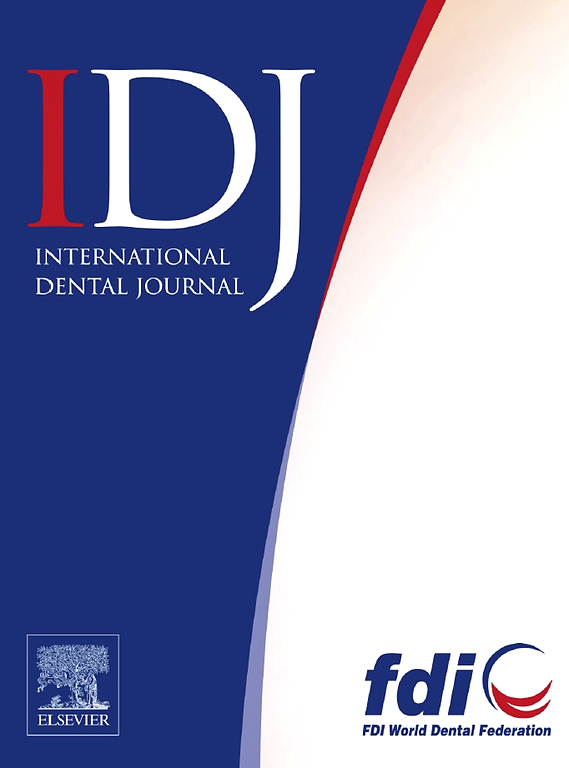Evaluation of Cytotoxicity and Osteogenic Potential of Strontium Silicate and Calcium Silicate-Based Sealers
IF 3.7
3区 医学
Q1 DENTISTRY, ORAL SURGERY & MEDICINE
引用次数: 0
Abstract
Objectives
This study aimed to evaluate the cytotoxicity and osteogenic potential of three sealers, including a strontium silicate-based sealer, C-Root SP (C-R), and two calcium silicate-based sealers, iRoot SP (i-R) and AH Plus Bioceramic Sealer (AHPbcs), compared with AH Plus (AHP) on MC3T3-E1 pre-osteoblasts.
Materials and Methods
Standardized sealer discs were eluted in a culture medium to assess cytotoxicity using the CCK-8 assay at various dilutions (1:1, 1:2, 1:5, and 1:10). Osteogenic differentiation was evaluated by culturing cells in osteogenic medium supplemented with 1:5 diluted sealer extract. Alkaline phosphatase (ALP) activity was assessed with an ALP assay and staining on days 7 and 14. Mineralized nodule formation was observed using Alizarin Red S staining on day 21. Gene expression of osteogenic markers (ALP, COL1A1, and RUNX2) was examined by RT‐qPCR. Differences were analysed using one-way/two-way variance analysis with the Tukey post-hoc test. Statistical significance was established at P < .05.
Results
C-R, i-R, and AHPbcs showed significantly higher cell viability than AHP (P < .001). All sealers exhibited cytotoxicity at higher concentrations (1:1 and 1:2 dilutions). ALP activity was significantly lower in cells exposed to AHP compared to cells exposed to C-R, i-R, and AHPbcs (P < .01). Cells exposed to C-R, i-R, and AHPbcs exhibited higher mineralized nodule formation than cells exposed to AHP. C-R, i-R, and AHPbcs enhanced osteogenic differentiation with higher osteogenic gene expression than AHP (P < .001).
Conclusions
Within the limitations of the study, C-R, i-R, and AHPbcs were biocompatible with MC3T3-E1 pre-osteoblasts at lower concentrations and were able to enhance their osteogenic potentials.
Clinical relevance
The strontium silicate-based sealer shows a favourable biological response and osteogenic activity in vitro, comparable to calcium silicate-based sealers, indicating its potential for clinical applications.
硅酸锶和硅酸钙基密封剂的细胞毒性和成骨潜能评价
本研究旨在评估三种封口剂的细胞毒性和成骨潜能,包括一种基于硅酸锶的封口剂C-Root SP (C-R)和两种基于硅酸钙的封口剂iRoot SP (i-R)和AH Plus生物陶瓷封口剂(ahpcs),比较AH Plus (AHP)对MC3T3-E1前成骨细胞的影响。材料和方法:在培养基中洗脱标准密封片,使用CCK-8测定不同稀释度(1:1,1:2,1:5和1:10)评估细胞毒性。在添加1:5稀释的sealer提取物的成骨培养基中培养细胞,评估成骨分化。在第7天和第14天采用碱性磷酸酶(ALP)测定法和染色法测定碱性磷酸酶(ALP)活性。第21天用茜素红S染色观察矿化结节形成。采用RT‐qPCR检测成骨标志物(ALP、COL1A1、RUNX2)的基因表达。采用单向/双向方差分析和Tukey事后检验分析差异。P <; 0.05具有统计学意义。结果c - r、i-R和ahpcs的细胞活力明显高于AHP (P < 0.001)。所有封口剂在较高浓度(1:1和1:2稀释)下均表现出细胞毒性。与暴露于C-R、i-R和ahpcs的细胞相比,暴露于AHP的细胞中ALP活性显著降低(P < 0.01)。暴露于C-R、i-R和ahpcs的细胞比暴露于AHP的细胞表现出更高的矿化结节形成。C-R、i-R和ahpcs促进成骨分化,且成骨基因表达高于AHP (P < .001)。结论在研究范围内,C-R、i-R和ahpcs在较低浓度下与MC3T3-E1前成骨细胞具有生物相容性,并能增强其成骨潜能。硅酸锶基封口剂在体外显示出良好的生物反应和成骨活性,与硅酸钙基封口剂相当,表明其临床应用潜力。
本文章由计算机程序翻译,如有差异,请以英文原文为准。
求助全文
约1分钟内获得全文
求助全文
来源期刊

International dental journal
医学-牙科与口腔外科
CiteScore
4.80
自引率
6.10%
发文量
159
审稿时长
63 days
期刊介绍:
The International Dental Journal features peer-reviewed, scientific articles relevant to international oral health issues, as well as practical, informative articles aimed at clinicians.
 求助内容:
求助内容: 应助结果提醒方式:
应助结果提醒方式:


